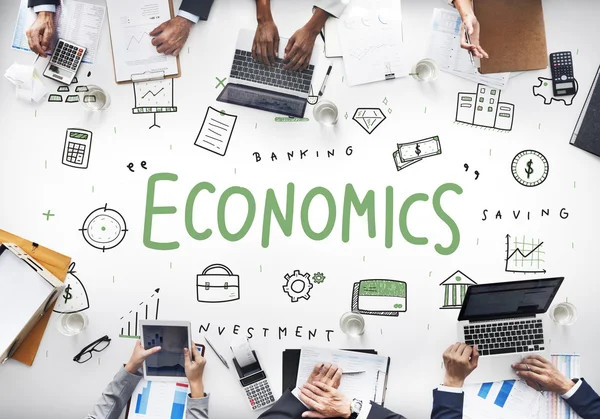Differentiating between microeconomics and macroeconomics is a wide and versatile concept which is often quite popular and is used as a research topic for economic assignments. Let's discuss in brief what the concept is. The social science of economics examines how people, organizations, and governments distribute finite resources to meet unending wants and requirements. It looks at how products and services are produced, distributed, and consumed to comprehend trends, human behaviour, and the effects of policies on the state of the economy. Paul Samuelson, a Nobel laureate, appropriately stated that "Economics is a study of how societies use scarce resources to produce valuable commodities and distribute them among different people." This quotation highlights the fundamental nature of economics as a field of study that deals with the difficulties of resource allocation in our complicated world.

What is Microeconomics?
The area of economics known as microeconomics examines the actions of specific groups of economic players, including enterprises, industries, and consumers. It looks at the choices these organizations make when it comes to resource allocation, costing, and production for particular markets. To better understand the dynamics of individual transactions and interactions within the larger economic system, microeconomics investigates ideas like supply and demand, competition, and elasticity. This field sheds light on the influence of individuals and small-scale economic entities on broader economic consequences.
What is Macroeconomics?
The field of economics known as macroeconomics focuses on the analysis of the entire economy. To comprehend and assess a country's or region's overall economic performance, it looks at aggregate economic parameters including GDP (Gross Domestic Product), inflation, unemployment, and national income. To create plans for fostering economic growth, stability, and prosperity on a wide scale, macroeconomists concentrate on the consequences of governmental policies, central bank operations, and global economic trends.
Difference between Microeconomics and Macroeconomics
The two distinct fields of economics, microeconomics and macroeconomics, examine various facets of economic performance and behaviour. Seven major distinctions between them are listed below -
1. Analysis's Purpose
Microeconomics- The study of individual economic agents, including consumers, businesses, and industries, is known as microeconomics. It investigates the choices that these organizations make about production, consumption, and pricing in particular marketplaces.
Macroeconomics- A larger perspective is used to examine the economy as a whole in macroeconomics. For a complete nation or region, it examines aggregate factors including total production, average price levels, national income, and employment levels.
2. Perspective
Microeconomics- It is a thorough bottom-up methodology to dissect the economic environment into its various components. It reveals the enormous impact of individual choices and interactions, which are like the deft strokes that create the picture of market results.
Macroeconomics- A high-level viewpoint is used in macroeconomics, which focuses on the overall behaviour and performance of the economy. It carefully examines the complex web of connections between broad economic indicators, figuring out the complicated confluence of variables that determine the economic future of countries and regions.
3. Core Subjects
Microeconomics- Including the fluctuating patterns of supply and demand, the complex dance between market structures like monopolies and perfect competition, the psychology of consumer behaviour, the fine art of manufacturing costs, and the delicate balancing act of resource allocation, microeconomics is a mosaic of important topics.
Macroeconomics- The Gross Domestic Product (GDP), inflation, unemployment, fiscal and monetary policy, and economic growth are all important topics covered by macroeconomics. These components make up an economy and shape its direction and well-being over time.
4. Goal of Study
Microeconomics- Microeconomics examines how decisions made by individual agents orchestrate the symphony of resource allocation, consumption trends, and production dynamics within the economic stage of precision. This delicate symphony of particular market dynamics is played out in the microeconomics sphere.
Macroeconomics- Macroeconomics is the study of how the economy functions as a whole, with a focus on patterns and regulations that have an impact on things like total economic production, price stability, and employment.
5. Impact on policy
Microeconomics- Microeconomics serves as the fundamental basis for developing micro-level policies, covering antitrust laws, pricing schemes, and sector-specific rules. It provides the complex understanding required for adjusting laws and guaranteeing fair market competitiveness.
Macroeconomics- To achieve macroeconomic stability and growth, macroeconomics is essential in determining monetary policy, which is under the jurisdiction of central banks, and fiscal policy, which is under the control of governments.
6. Measurement
Microeconomics- By focusing on the specifics of individual markets and enterprises, microeconomics provides insights through measurements of particular variables like prices, volumes, and market shares. These micro-level measures provide a clear picture of the complex dance occurring within economic ecosystems.
Macroeconomics- Critical metrics including GDP, inflation, unemployment, and national income are closely examined by macroeconomics. These measurements act as a compass for policymakers, assisting them in navigating the enormous economic ocean and directing them in the direction of prosperity and stability on a national or international level.
7. Date Range
Microeconomics- In-depth analysis of individual decision-making inside particular marketplaces, where short-term market dynamics are crucial, is the focus of microeconomics. It disentangles the delicate threads that weave the fabric of our economic world by looking at these micro-level interactions.
Macroeconomics- With its broad perspective, macroeconomics examines economic trends and policies that can span years or even decades. By taking a longer-term view, it reveals the changing economic narrative and provides insights vital for long-term stability and prosperity.
The study of economics can benefit from both microeconomics and macroeconomics. Macroeconomics provides a larger view, examining the overall performance and policies that affect an entire economy, in contrast to microeconomics, which focuses on the actions of individual economic agents inside particular marketplaces. For a thorough comprehension of how economic choices and systemic variables influence our economic reality, both disciplines are necessary.
Conclusion
Despite having different focal points, these two branches are tightly connected, resulting in a pleasing equilibrium. Economists combine micro and macro viewpoints to capture the intricate beauty of our economic world, just like a painter uses both wide strokes and precise details to create a masterpiece. In short, macroeconomics discloses the epic tale of the complete symphony, whereas microeconomics tells the story of how the individual notes come together. Together, economics assignments help in deepening comprehension of the intricate and dynamic realm of economics and help us grasp the minute details and grand builds that define our financial world.







